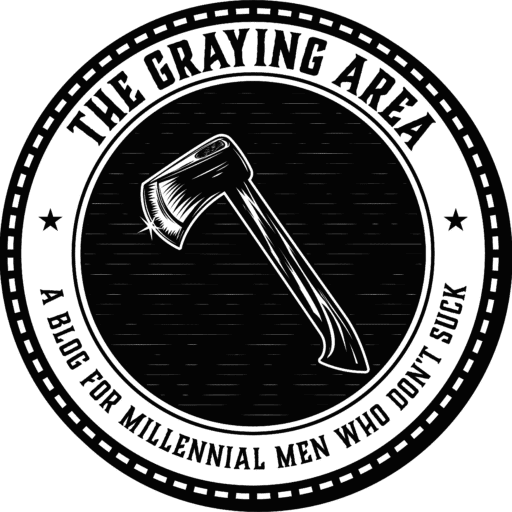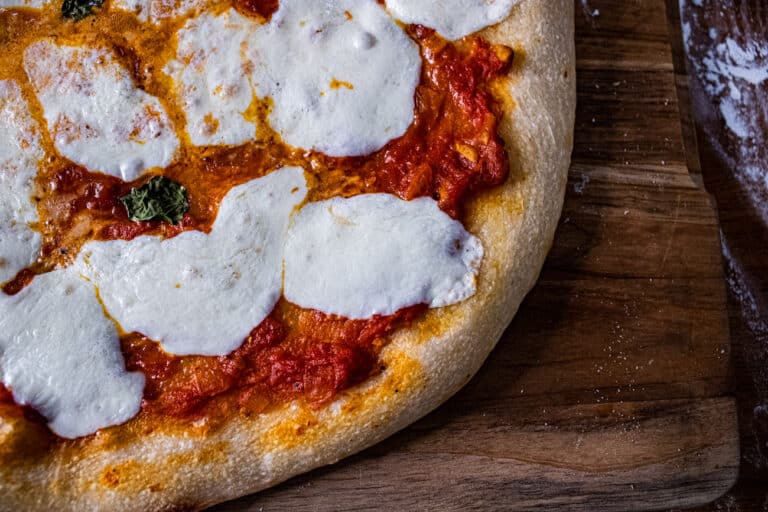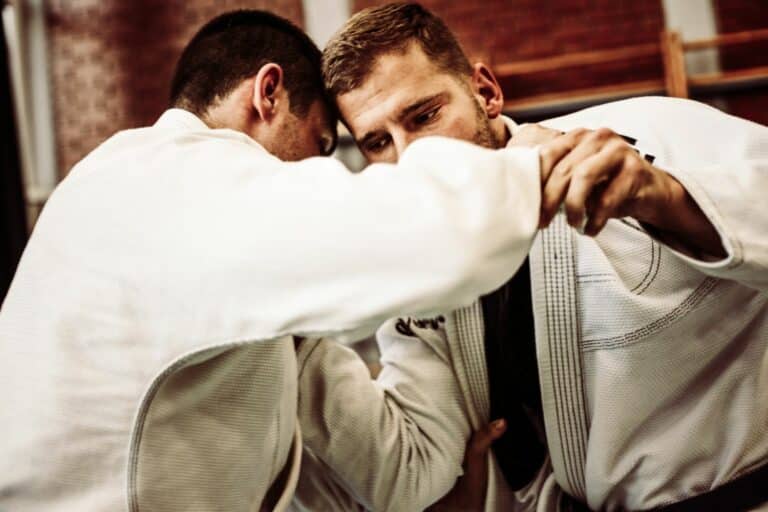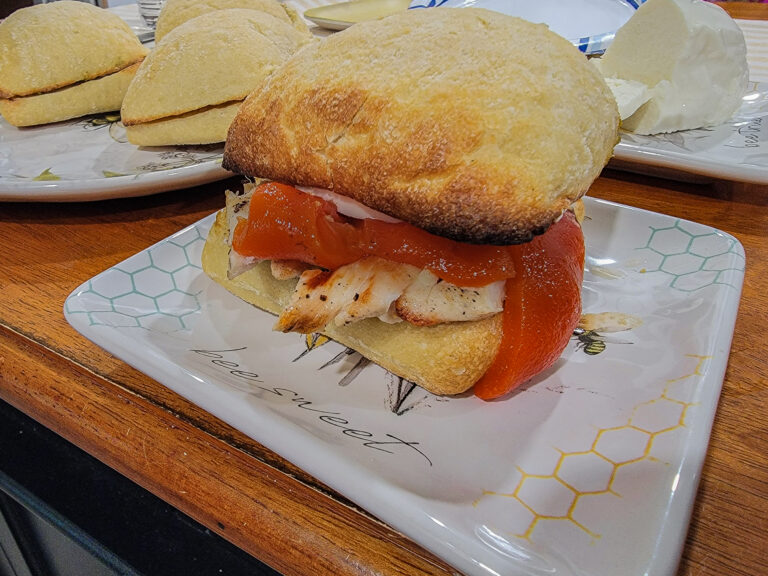Parts of a Fountain Pen: A Perfectly Simple Guide
Writing with a fountain pen can be intimidating. It takes some getting used to, and if you scour pen threads, the gentlemen there will use terms that make it sound much more complicated than it is. And while I’m a big fan of writing with a fountain pen (I got my first Kaweco in a Bespoke Post box several years ago), I have no problem admitting that some of the parts are a bit confusing.
So, what better way to remove the veil and maybe shake some of the intimidating factors than to break down the different parts of a fountain pen? This way, you don’t have to feel so stressed out about choosing from the best fountain pens.
This guide will explain all of the anatomy of a fountain pen that I’m aware of, though I’m sure some very high-end brands may use different names or different proprietary parts. Either way, this guide will help.

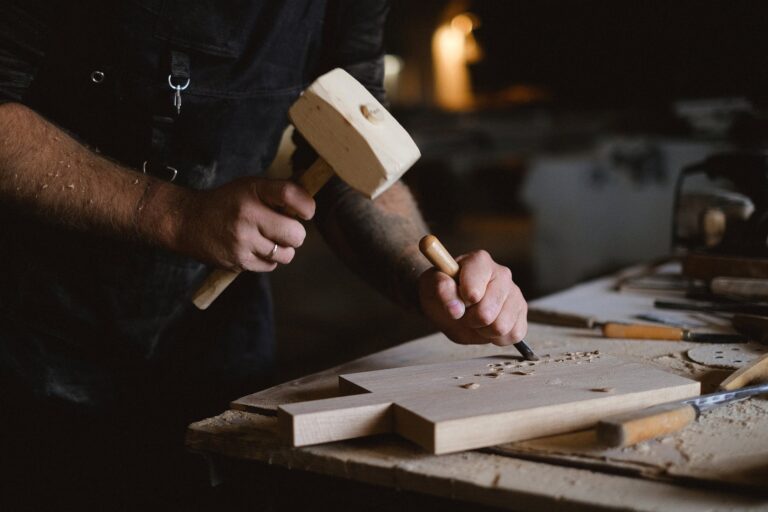
The Best Hand Tools List for Guys: 25 Must-Have Pieces
Being able to build something or repair the things that surround you every day is one of the greatest skills a guy can have. It’s a skill that is not only helpful but will also save you money. Instead of calling the repair guy, you can grab your toolbox and get to work. But you…
Parts of a Fountain Pen
Let’s jump right into the different parts of fountain pens. With this fountain pen anatomy guide, you’ll understand how a fountain pen works and the individual functions of the parts that make it. Remember that many of the following parts are either customizable or come in a wide variety of materials, so don’t be afraid to jump headlong into fountain pen community as soon as you’re done reading this. Maybe you can even start using your fountain pen for writing in a journal and improving your organization and mental health. Anyway, let’s get into it.
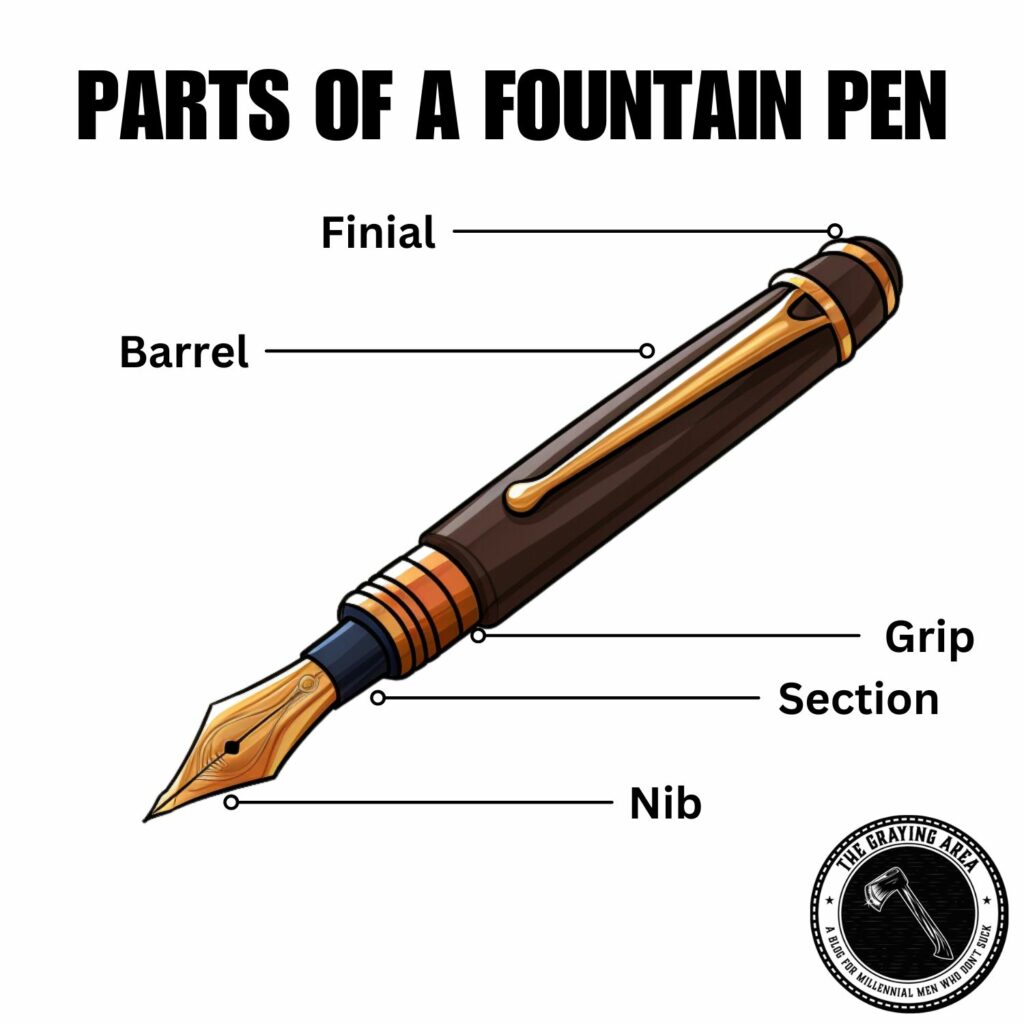
Cap
The pen cap is the part of the pen that covers the nib when it’s not in use. The pen cap is extremely important because it keeps the nib, slit, and breather hole free from dust and gunk. Pen caps come in a wide variety of styles, some of which feature clips while others might not. Some pen caps are highly embellished while others might be simple.
Barrel
The barrel is the part of the pen that rests on top of the user’s hand. It’s the main part of the pen that the user holds. The anatomy of a fountain pen barrel is made up of several sections itself; the body, the threads, the step, and the decorative finial and trim ring.
- Body: The body of the pen is the part that houses the ink, whether in the form of an ink cartridge or a converter. Barrels are typically fairly plain but may feature a trim ring and a decorative finial.
- Threads: Threaded end that allows the user to assemble and disassemble the pen for ink refills and service.
- Step: Small lip between the threads and the body. The step is slightly thicker than the threads but slightly thinner than the body, making it a step between the two.
Nib
The fountain pen nib is the metal part on the end of the pen, and it’s the part of the pen that actually drags across the surface of the paper. They come in a wide variety of styles (extra-fine, fine, medium, and broad are common), and they’re usually made from stainless steel or gold alloys. Different materials and styles react differently, allowing users to build several different fountain pens for a smooth writing experience no matter what they need.
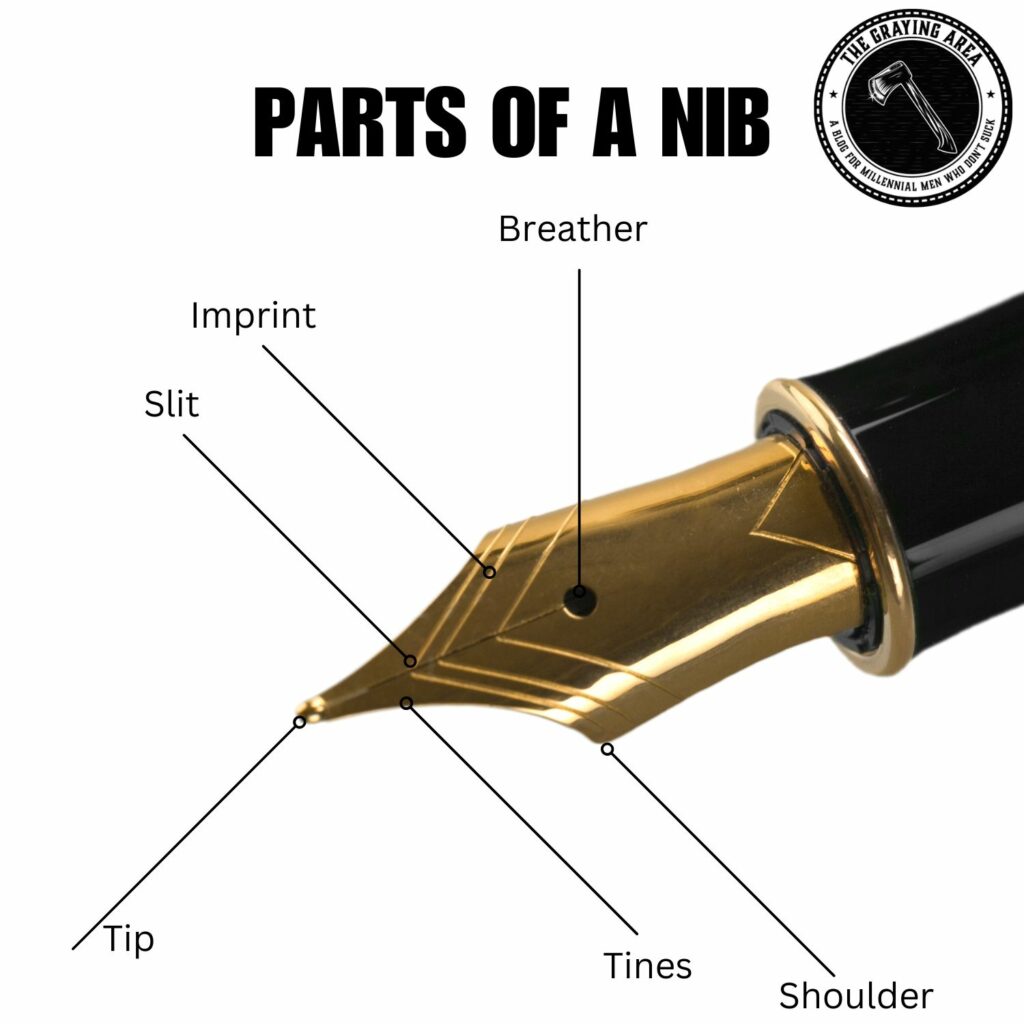
The fountain pen nib has several parts, as well:
- Tipping material: The tipping material is a small addition of iridium alloy that is welded to the tip of the nib. The purpose of this hard-wearing material is to be more durable than the nib material without changing the nib’s properties.
- Tines: The two blades at the front of the nib, separated by the slit. They allow for flexibility.
- Breather: The breather or breather hole is a vent at the end of the slit that allows for ink flow without causing a vacuum.
- Slit: The very thin cut between the tines that carries ink from the feed to the paper.
- Shoulder: The wide parts of the nib that flare outward before tapering back to the tip.
- Imprint: The stylish and identifying engraving on the nib that details size and type.
- Base: The part of the nib that slides into the section of the pen.
Feed
The feed lives underneath the nib and its job is to deliver ink from the ink cartridge or converter to the nib. They’re usually plastic or ebonite, and they look somewhat like a fish skeleton thanks to the fins and wings.
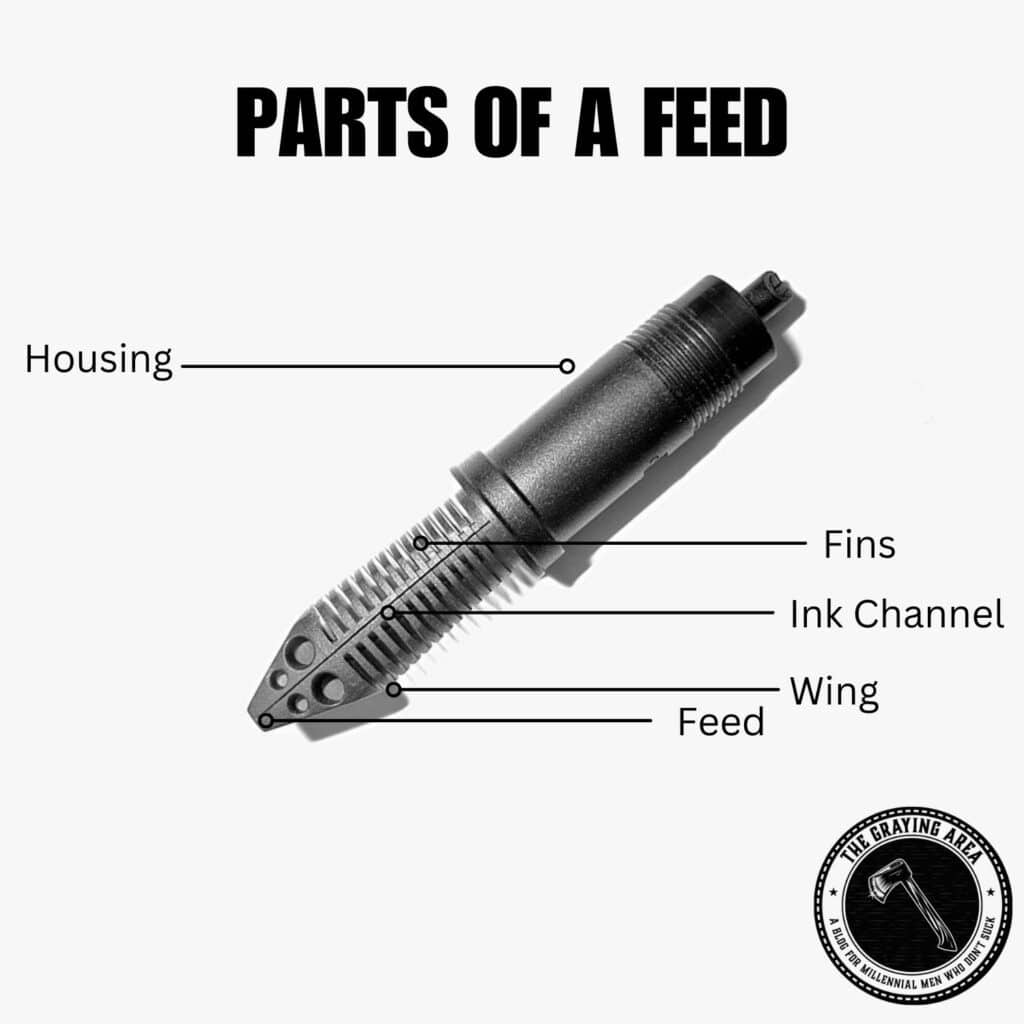
- Wings: The feed’s widest section. They fit right under the nib’s shoulders.
- Fins: Small, radiator-like tabs around the feed that provide the airflow that the ink needs to fill the ink channel.
- Ink channel: The small groove that the ink flows through via capillary action.
- Housing: The plastic shroud that the feed slides into before sliding into the section.
Section
The section’s role is to connect the nib and feed to the barrel of the pen. It also features the grip, which is the main point of contact when writing with a fountain pen. The Section is threaded on one end and may feature a trim ring to break up the design between the grip and the barrel.
Converter or Cartridge
The converter or cartridge is the device that holds the ink. The difference between the two is that a cartridge is disposed of and replaced while a converter can be refilled with pen ink.
The converter consists of several parts on its own. They are:
- Ink reservoir: The ink reservoir is the vessel that holds the ink
- Seal: The plunger-type device that seals against the reservoir and allows the cartridge to draw ink up into the reservoir.
- Rod: The piston-like mechanism that pushes or pulls the seal in and out.
- Shroud: The metal section that houses the end of the rod and knob.
- Knob: The dial that the user twists to draw ink into the converter.
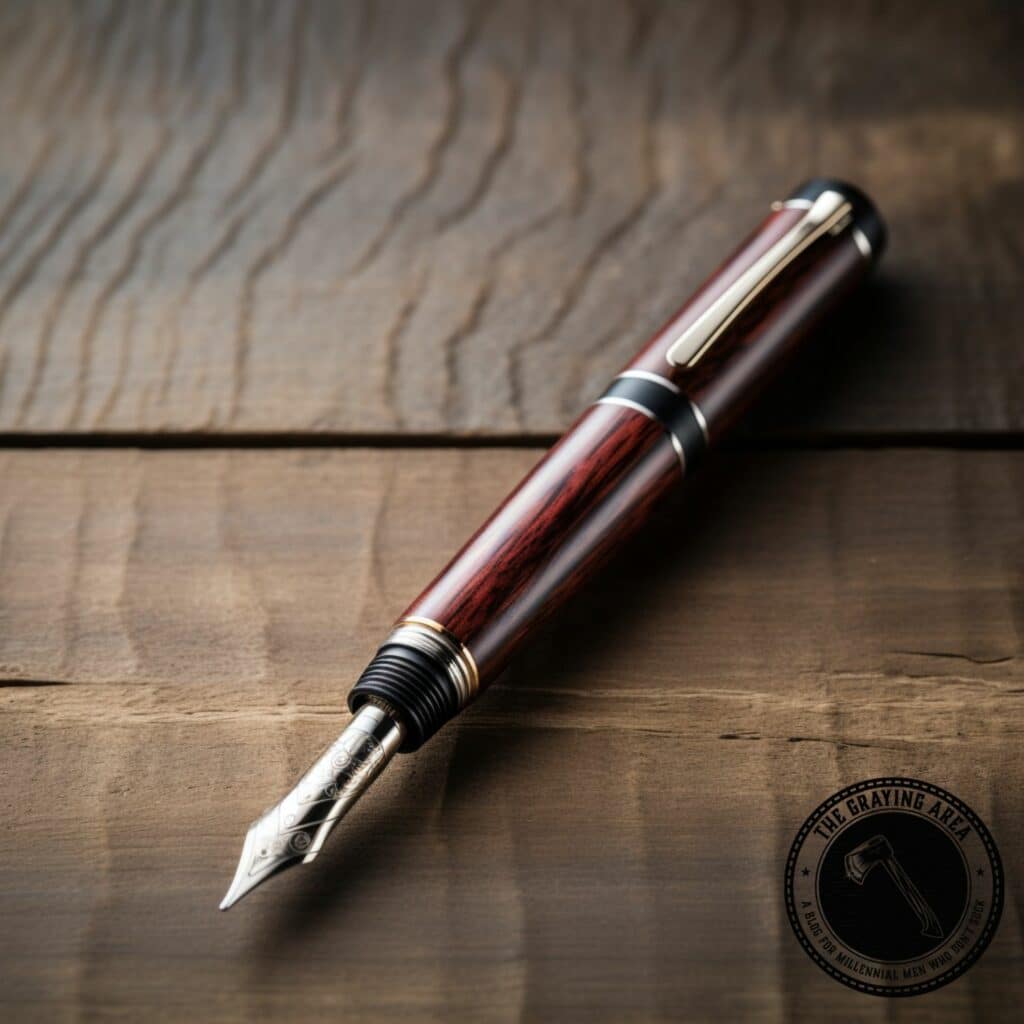
Your Turn
Does knowing the parts of a fountain pen make you a little more comfortable? Are you willing to order yourself a new pen and learn how to use it? If you’re struggling, be sure to check out my guide on how to write with a fountain pen. Also, make sure to sign up for The Graying Area’s email list so you don’t miss any of this awesome content going forward. I’m sending weekly newsletters to keep readers updated! Sign up below.

Enjoying learning about badass skills? What about reviews on products men actually use? Or just generally learning how to be a more useful man? THEN JOIN THE TGA MAILING LIST! Weekly content sent directly to your email address so you don’t miss any of the fresh content and useful advice we’re producing. Sign up below!
Fountain Pen Parts FAQs
Even with all of that background on the different parts of a fountain pen, you might still have questions you want to answer. The following are some of the frequently asked questions about fountain pens, their parts, and how they work.
What are the components of a fountain pen?
The main components of fountain pens are the barrel, the section, the feed, and the nib. There are also parts inside the pen such as the converter or cartridge, and additional stylistic touches like clips and trim rings.
What is the section of a fountain pen?
The section of a fountain pen is the piece that connects the nib and feed to the barrel of the pen. It’s also where the user typically grips their fountain pens.
What is the ink container of a fountain pen called?
Cartridge or converter. A cartridge is a disposal ink reservoir that the user replaces when the pen runs out of ink. The converter is refillable, allowing users to purchase pen ink and refill their cartridges whenever the ink runs out.
What is the feed of a fountain pen?
The feed of a fountain pen is essentially the ink delivery device. This piece looks similar to a fish skeleton and features fins that provide the airflow that the ink needs for capillary action to take place. The ink then flows down the channel until it reaches the nib, where it flows out of the slit. The feed facilitates that ink flow.
